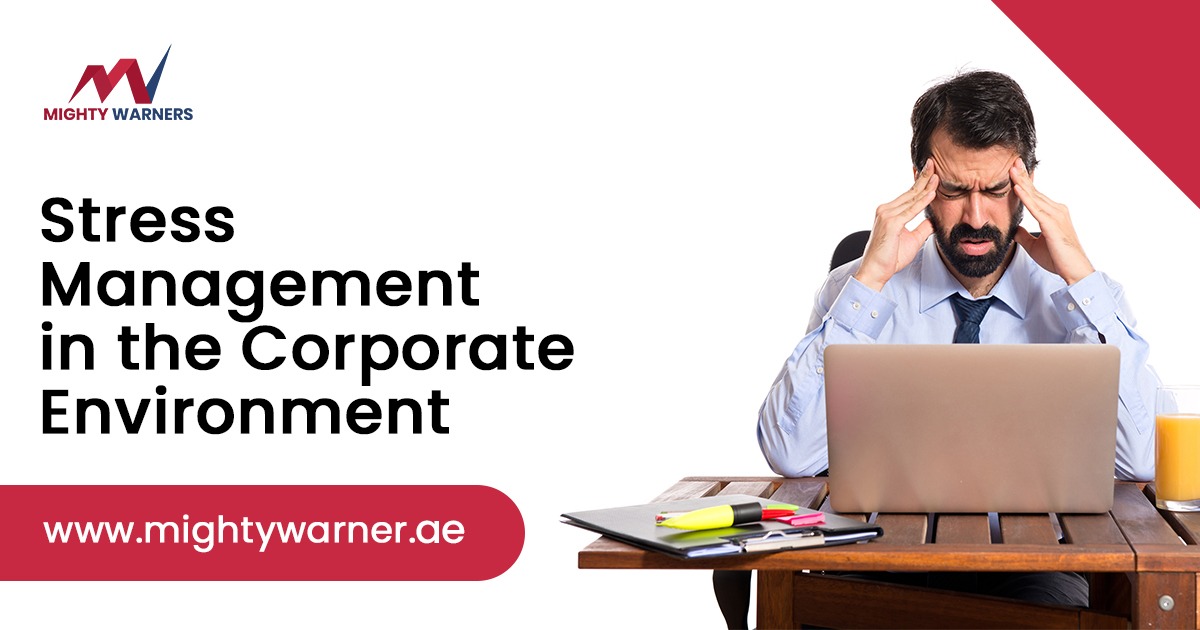As we all know, the corporate environment plays an important role in the employees’ health, productivity, and in their life. Because Monday to Friday, employees do everything for their office. They get up early in the morning and sleep on time because they need to go office on time.
Overall they give their half-life to their workplace. So this is the organization’s responsibility that they take care of their employees. And create a stress-free environment for them.
In this blog, let’s discuss the best effective strategies for creating a positive environment in the workplace.
Table of Contents
ToggleFinancial and Health Impacts of Stress in the Workplace

- 80 percent of employees are unhappy or feel stressed about their jobs. Studies show that this figure is increasing every year by a significant percentage.
- If employees will suffer from stress in their workplace, what do you think will be good for the organization? The answer is no. Because stress will cause medical expenses and lost productivity. It costs businesses billions of dollars every year.
- Job-related stress is very harmful to employees. It creates physical health issues that make them weak and snatch their thinking capacity. And these issues are heart disease, muscle tension, headaches, and digestive problems.
- It can also impact mental health, causing agitation, anxiety, depression, and substance abuse
How does stress affect employee performance?
- High levels of stress contribute to decreased organizational and employee performance
- It results in a high error rate, poor quality of work, increased staff turnover, and absenteeism.
Also Read: The Best E-commerce Digital Marketing Agencies in Dubai
Strategies for Managing Workplace Stress

1. Start With Your Organization’s Leadership Structure
- Lead by example and manage your own stress in a healthy manner.
- Communicate transparently with employees about job performance, responsibilities, and company goals.
- Express genuine gratitude and recognition for employees’ contributions.
- Encourage work-life balance by setting boundaries and modeling healthy habits.
2. Implement a System of Checks and Balances When Delegating Work
- Assess workload distribution and consider implementing a rotational shift system.
- Involve employees in decision-making processes regarding task assignments and deadlines.
- Provide necessary resources, supplies, and time to perform tasks effectively.
3. Offer a Flexible Work Environment
- Embrace flexitime to accommodate employees’ individual preferences and work-life balance.
- Allow for a designated “no-work time period” to promote work-life separation.
- Flexibility in work hours can attract and retain top talent.
4. Establish Different Work Spaces in the Office
- Create designated areas for quiet work, relaxation, and creativity.
- Provide a quiet space for reflection and meditation.
- Design a creative lounge or patio for brainstorming and inspiration.
- Comfortable relaxation spaces can help employees unwind and recharge.
5. Introduce an Employee Wellness Program
- Focus on holistic well-being. This includes diet, exercise, mental health, personal relationships, and finances.
- Offer training and education opportunities related to stress management.
- Provide tools and resources to help employees relieve stress.
- Encourage support and collaboration among employees through a team-oriented approach.
6. Practice Effective Communication
- Open and honest communication is crucial for stress management in the corporate environment.
- Express your concerns or challenges to your colleagues, supervisors, or HR department.
- Communication is crucial to finding solutions, setting boundaries, and seeking necessary assistance.
Summary
Managing workplace stress is crucial for fostering a healthy and productive work environment. Organizations can effectively reduce stress levels and improve overall employee well-being and performance if they implement some best strategies.
Such strategies are leadership support, workload balance, flexibility, and work arrangements. It also includes designated workspaces and employee wellness programs. Remember, a stress-free workplace leads to a more prosperous and productive workforce.
Also Read: All the Essential Information on SEO in Dubai at your Fingertips
FAQs
1. What are the financial and health impacts of stress in the workplace?
- 80 percent of employees are unhappy or feel stressed about their jobs. Studies show that this figure is increasing every year by a significant percentage.
- And do you know? The American Psychological Association states that over a third of American professionals deal with chronic work stress.
- If employees will suffer from stress in their workplace, what do you think will be good for the organization? The answer is no. Because stress will cause medical expenses and lost productivity. It costs businesses billions of dollars every year.
2. What are the effects of job stress on physical health?
- Job-related stress is very harmful to employees. It creates physical health issues that make them weak and snatch their thinking capacity. And these issues are heart disease, muscle tension, headaches, and digestive problems.
- It can also result in frequent colds, infections, nervousness, shaking, obesity, and other ailments.
3. How does job stress affect mental health?
- Research suggests a biochemical link between stress and mental illness.
- Chronic job-related stress can negatively impact an employee emotionally, cognitively, and behaviorally.
- Mental changes associated with stress. And this includes agitation, constant worrying, procrastination, and difficulty relaxing. It also causes low self-esteem and increased use of substances like alcohol or drugs.
4. How does stress affect employee performance?
- Employee stress contributes to decreased organizational and overall performance.
- It leads to a high error rate, poor work quality, high staff turnover, and increased absenteeism.
















